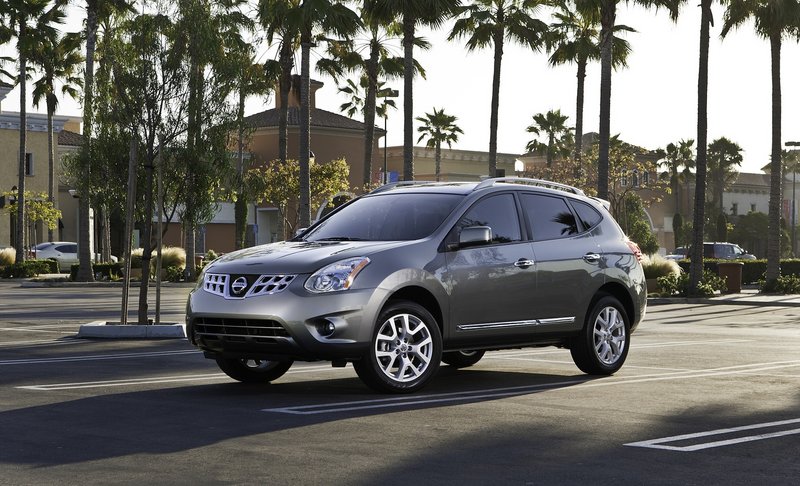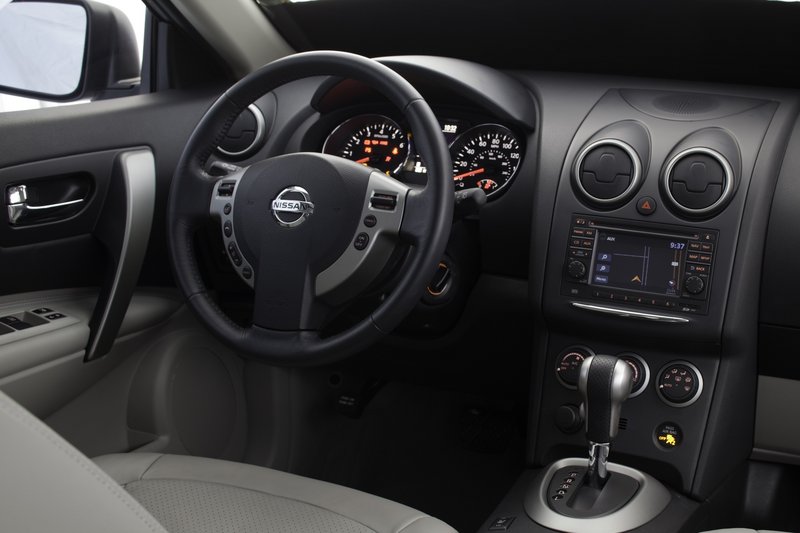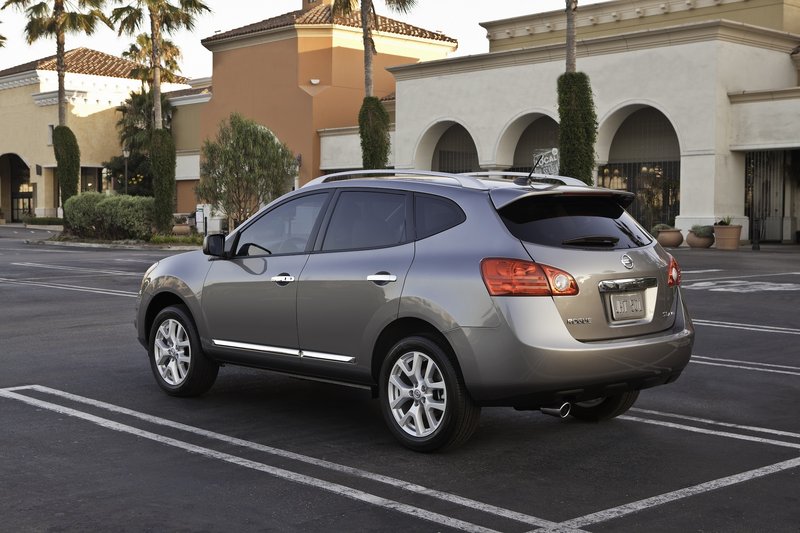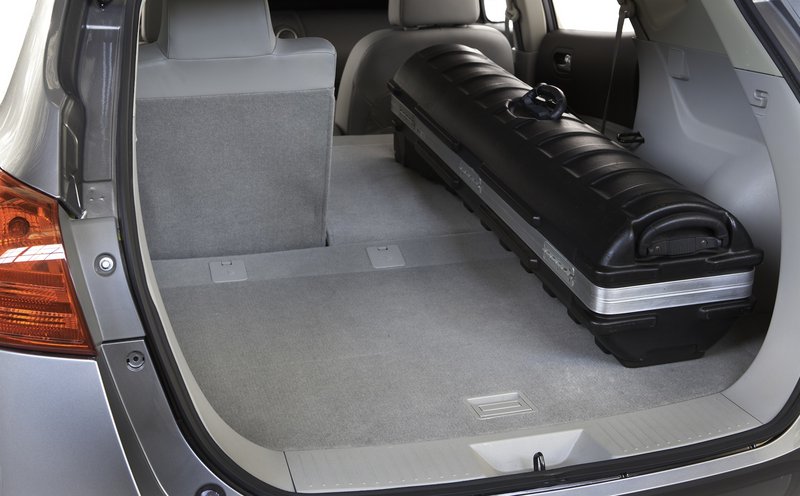For seven consecutive days, Nissan’s Rogue was as pleasant and compatible a companion as a best friend from high school.
It is roomy and comfortable enough for a couple of multi-hour trips on the highway.
It is economical enough for a workweek of commuting on a single tank of fuel.
It is versatile enough for fetching building materials from Lowe’s and Home Depot.
And it is peppy and agile enough to keep me from feeling frustrated behind the wheel.
Yet when the Rogue was retrieved after a week, I didn’t miss it. Maybe it’s because it doesn’t have a strong personality or because it never behaved like its name.
Whatever the reason, we failed to connect an emotional level.
The 2011 Rogue SV is like someone you meet at a cocktail party, spend most of the evening chatting with, and then never see again … and don’t care.
I certainly won’t mind if another Rogue shows up in my driveway any more than I’d mind spending another evening with that cocktail party companion. But there’s simply no compelling reason to look forward to either.
In today’s automotive world, in which consumers appear driven more by practical and utilitarian needs than emotions, the Rogue’s plainness may not be a deal-breaker. But it’s surprising that the same company that delivers dynamic performers such as the Altima and Maxima and distinctive vehicles such as the Juke and Cube also spawned the Rogue.
Not that there’s anything wrong with it, as Jerry Seinfeld might say.
With some pump prices nudging past four bucks a gallon during my Rogue engagement, I appreciated being able to drive a little over 24 miles for every gallon the Rogue consumed. The EPA says the Rogue will average 22 mpg in city driving and 26 or 28 mpg (with front- or all-wheel drive, respectively) on the highway.
The Rogue was competent and pleasant enough in both scenarios. In town, it is small enough to be maneuverable and easy to park. On the highway, it tracks true with minimal driver intervention, rides comfortably, and does a nice job of muting wind and road noise.
Not all noises are so well muted. The Rogue’s drivetrain is comprised of a 2.5-liter, four-cylinder engine and continuously variable transmission (CVT). Nissan has been a pioneer and champion of CVTs, which in principle are more efficient than conventional automatics because they can provide an infinite number of “gear” ratios.
Nissan’s CVTs seem to bear that out, delivering good performance and decent fuel economy. And because they don’t rely on clusters of gears engaging and disengaging, they exhibit none of the lunging or lurching that can be noticeable when even the most sophisticated automatic transmissions shift up or down.
What is noticeable when driving the Rogue is a sort of moaning or droning as the CVT does its job. It’s particularly noticeable during full-throttle acceleration, when the otherwise discreet engine also becomes more obtrusive.
If you’re not used to driving a CVT, the Rogue’s whine might even be disconcerting, since it sounds a lot like a conventional automatic that isn’t operating properly.
The Rogue’s responsiveness should alleviate those concerns. It’s not a speed demon and doesn’t offer an optional V6 power upgrade like some of its competitors, but it feels peppy around town and has ample punch for highway merging and passing.
It also delivers ample comfort. The Rogue won’t make the worst winter-ravaged road ruts or shoddy spring patch jobs disappear, but it rides smoothly on average roads.
Its handling is equally competent, characterized by a responsive steering system, reasonably good grip and adequate roll control in the corners.
The corners of the Rogue itself have been shapely since it debuted as a 2008 model, yet Nissan made several changes that make it more appealing to my eyes. That’s true inside as well as out, although I still don’t think the interior is as upscale looking as some competitors.
Nissan also upgraded the Rogue’s standard feature package, which was pretty good to start with. Every Rogue comes with four-wheel antilock disc brakes, an anti-skid system, front and rear side curtain airbags, air conditioning, tilt steering wheel, 60/40 split folding rear seatbacks, keyless entry, trip computer, iPod interface and power mirrors, windows and door locks.
The SV I tested also includes a backup camera with 4.3-inch monitor, power driver’s seat, satellite radio and steering wheel audio controls.
The backup camera and iPod interface are offered on Rogue for the first time along with options such as a navigation system, auto climate control and auto on/off headlights.
While those features and its other virtues made Nissan’s Rogue a pleasant companion, our relationship never turned into a love affair. Nevertheless, I’d recommend that anyone in the market for a compact crossover — a class that’s extremely competitive right now — take one for a date.
Scott Wasser is executive editor of MaineToday Media. He writes a weekly auto column for the Sunday Telegram and other newspapers. He can be reached at
swasser@pressherald.com.
Send questions/comments to the editors.






Success. Please wait for the page to reload. If the page does not reload within 5 seconds, please refresh the page.
Enter your email and password to access comments.
Hi, to comment on stories you must . This profile is in addition to your subscription and website login.
Already have a commenting profile? .
Invalid username/password.
Please check your email to confirm and complete your registration.
Only subscribers are eligible to post comments. Please subscribe or login first for digital access. Here’s why.
Use the form below to reset your password. When you've submitted your account email, we will send an email with a reset code.